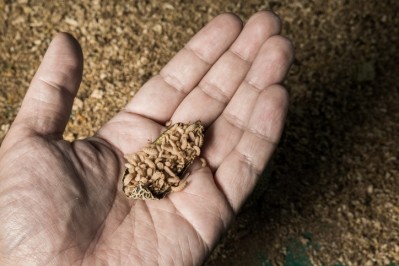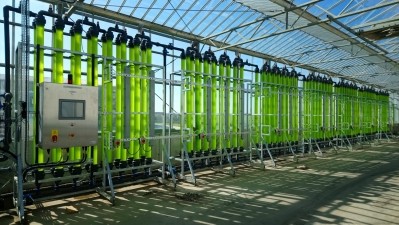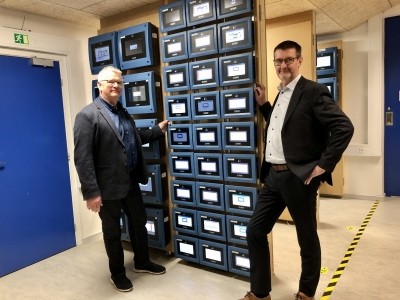Research: BSF meal and spirulina in feed do not compromise pork and chicken meat quality

Both studies were conducted as part of a larger interdisciplinary research project, Sustainability Transitions in the Food Production, which involved research conducted n Germany, France and the Netherlands, three markets with significant livestock production.
With the spotlight on the negative environmental impact of food products of animal origin, the goal of the project was to look at ways to achieve a more sustainable food and agriculture system, trying to make production and consumption more ecologically sound. The researchers evaluated whether one way to do so might be through the use of alternative protein sources, either in feed or for direct human food consumption.
One of the research teams involved, those based at the University of Göttingen in Germany, were charged with investigating whether Black Soldier Fly (BSF) derived protein meal and a microalgae ingredient, spirulina, altered chicken meat or pork meat quality.
Brianne Altmann, from the Department of Animal Sciences, University of Göttingen, told us:
“The idea was that we would look at the entire food supply chain, getting farmer perspectives on the use of new protein sources in feed, assessing the end-product and reviewing consumer acceptance as well.
“Meat quality was one of the important aspects of the research for us as it did not make sense to recommend new protein sources if the final meat product was going to be detrimentally changed, if the processing side would have to be modified to accommodate altered quality parameters from using those feedstuffs.
“Therefore, we wanted to evaluate whether there would be a change in meat products from animals fed alternative proteins and we needed to determine the aspects to take into consideration to make these products marketable.”
These aspects included shelf-life, eating quality, as well as visual appearance and standard slaughterhouse quality control measures, such as pH.
Novel protein selection
The research on the quality of meat derived from chickens and pigs fed the novel protein sources was actually conducted in 2016.
“The reason spirulina was chosen was for the fact that, at the time, there was a lot of information available about that microalgae source. Since then, there has been a lot more data published around another microalgae, chlorella, and its impact on animal nutrition, and on meat quality, for example. Chlorella proves to also be a promising microalgae protein source.
“Spirulina has been used in Germany in terms of feed supplementation for pigs, in very low dosages, but not as a protein source, more for its immune boosting properties. Nevertheless, it is a costly ingredient.
“China has spent a lot time researching spirulina, though, as a protein source but we do not know about the scale of its use as a protein source in that market.
“In terms of selecting insect protein, the theory was, when the project started, that BSF larvae mal was a protein source that was produced independent of arable land, that the larvae could be reared on waste products.”
Broiler chicken results
In their paper focused on broiler production and the new protein sources, which was published recently in the Journal of the Science of Food and Agriculture, Altmann and her colleagues outlined how birds were fattened using feed with the main protein sources being soybean meal, partially de‐fatted BSF (Hermetia illucens) larval meal or spirulina (Arthrospira platensis).
The team said the results of laboratory testing and sensory analyses across 132 broiler chickens show that BSF larvae meal and spirulina can be included in poultry feed without negatively impacting quality.
In summary, they said that no eating quality concerns were identified - the insect-fed chicken mirrored the control, soy-based, group, and spirulina feed makes it taste all‐the‐more like chicken.
They noted, however, certain challenges when using these protein sources. BSF fed meat contains an increased proportion of saturated fatty acids which may increase quality parameters, such as shelf‐life, but are not positively perceived from a health point of view.
“That was slightly unexpected. It did surprise us a little bit. When we started writing the manuscript [compared to when we started the experiments] more information became available on fatty acid composition of insects, and so we realized that this does make sense. It is possible to change the fatty acid composition of insects, though, but then we have to feed them more polyunsaturated fatty acids (PUFAs),” said Altmann.
But, on a positive note, she said the saturated fatty acid levels they saw in the pork fat, as per their pig-based study, could be leveraged in terms of curing ham production.
In the case of spirulina in the broiler chicken study, the researchers said special attention should be paid to the intensive meat color and increased lipid oxidation of products in highly oxygenated modified atmosphere packaging (HiOxMAP) when planning to bring these products to market. In Germany, current retail conditions heavily rely on pre-packaged products, and HiOxMAP is typically employed (BfR, 2010).
Finally, although spirulina is often marketed as a good source of PUFAs, the team said the spirulina-fed chicken in their study did not produce thigh meat with the highest PUFA content.
“This really surprised us. Spirulina is supposed to be a superfood, high in PUFAs and marketed as high in antioxidant properties and omega-3s and we did not find this at all. If you then look deeper, the literature is actually quite conflicted as to whether spirulina is actually high in PUFAs or omega-3s. It has probably a lot to do with its production but there has not been a lot of research published [looking] into that,” continued Altmann.
Pork meat quality
In another paper, published in the journal Meat Science last year, the same team found pigs fed the spirulina or the partially defatted BSF larval meal appeared to yield a raw meat product on par with pork from soy-fed animals.
The researchers saw that the experimental diets resulted in pork products that hardly differed in sensory aspects from the control, and differences found in alternatively fed products could be interpreted as sensory improvements such as more overall odor and increased juiciness.
Furthermore, they observed that products rarely differed in physio-chemical parameters, even when packaged under industrial standard conditions.
They argue that the alternative diets could likely be integrated into the current production system with no adverse effects. In fact, the team remarked that given that diet had a significant effect on the backfat fatty acid composition, both alternatively-fed groups could potentially be marketed at a premium and appeal to a broader range of consumers from a health conscious or sustainability point of view.
"Hermetia illucens increased lauric acid levels in backfat indicating that this fatty acid may be suitable as a biomarker for Hermetia illucens-fed pork."
Next steps
In terms of next steps, Altmann is involved in another meat quality focused project using BSF derived protein but this time the team, including researchers based in Bolzano, Italy, will evaluate insect larvae reared using substrates such as food waste.












